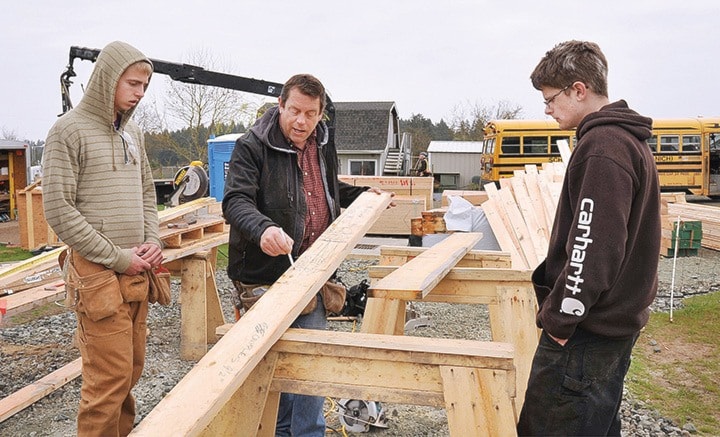With a looming labour shortage, a decade-old program is becoming a critical component to high school education.
Students in Greater Victoria benefit from the South Island Partnership program between Camosun College and the Sooke, Saanich, Gulf Islands, and Cowichan Valley school districts.
The program allows students to take college level training while they’re still attending high school.
“You need to have good academic skills no matter where you go. You need to have good foundation in reading, writing, arithmetic, no matter where you go,” said Kelly Betts, South Island Partnership co-ordinator at Camosun College.
“The challenge in the (kindergarten to Grade 12) system is with limited resources, it’s hard to cover a broad cross-section, that’s why the collaboration between the school districts and the college works really well.”
The programs have students “work ready” by high school graduation.
“There’s barriers, there’s a stigma around blue collar trades work,” said Stu Rhodes, career counsellor and apprenticeship co-ordinator for Stelly’s secondary in Central Saanich.
“In high schools, 95 per cent of what we do is geared to prepare kids for university. The reality is, in almost every school in North America, 30 per cent of our high school graduates go directly to university.”
Rhodes and Betts work with those students not inclined to university, offering instead, a career in trades.
“We have seats set aside in all the trades training programs for high school students who know that’s what they want to do,” said Betts. The dual credit programs include sheet metal work and welding, horticulture and cooking.
“Districts have been offering shop and trades classes forever, but the South Island Partnership started focusing on that in 2003,” said Betts, who has been with the program 10 years. “We’re seeing an increase in participation every year.”
Most high schools in the region have some sort of trades program, depending on facilities. For example, Spectrum, Esquimalt, Stelly’s and Edward Milne schools are set up for culinary training. Vic High has the only regional auto body program, in partnership with Vancouver Community College.
Trades hold a bright future, Rhodes said, because the basics like toilet repair, deck building and auto mechanics, can’t be outsourced.
“We’re definitely under-servicing our students, we are not providing the relevance they need to be ignited,” said Rhodes. “We’ve got a severe skilled trades shortage impending in the future.”
Plan focuses on industry
Part of the B.C. Jobs Plan, released in the fall of 2011, focuses on eight key industries: agrifoods, forestry, international education, mining, natural gas, technology, tourism and transportation.
“Government has invested quite a bit in the post secondary institutions that offer trades. … They’ve been very supportive of these collaborations between the school districts and the post secondary system,” said Kelly Betts, noting Camosun College is building a $30-million trades training facility, scheduled to open in 2015. “Then we’ll have more opportunities for school districts and students.”
The plan includes a promise to expand skills training by investing $500 million annually in skills training, $75 million to improve training facilities and upgrading equipment and will dedicate $5 million annually to improving the skills of those already in the workforce starting in 2013.
